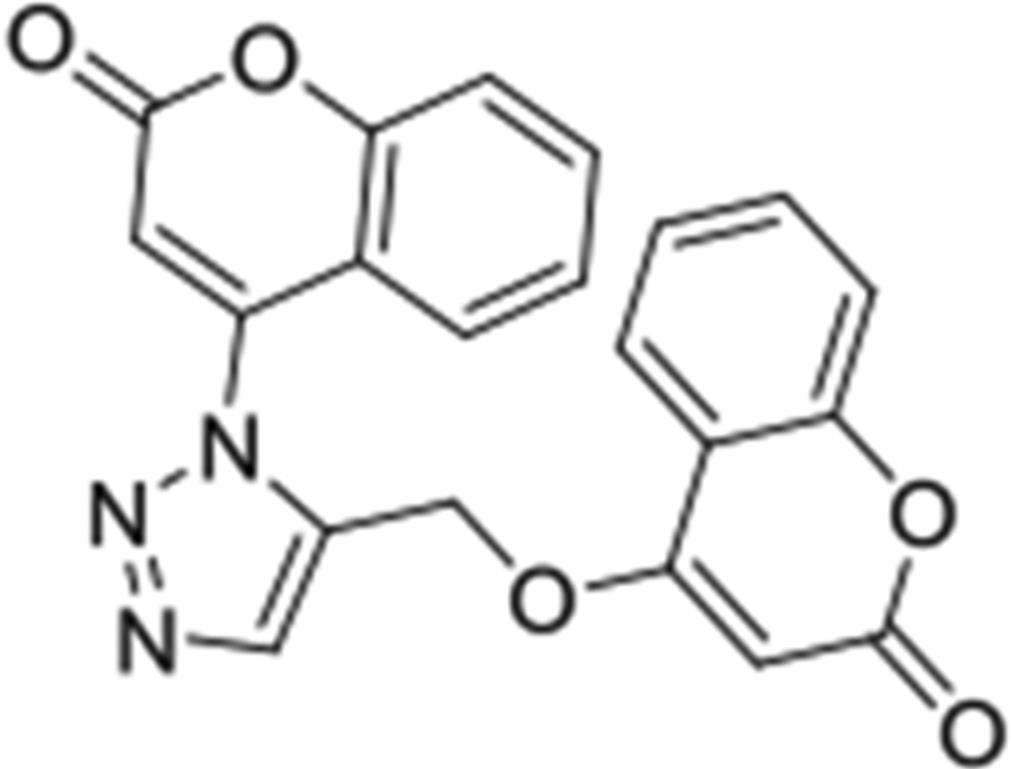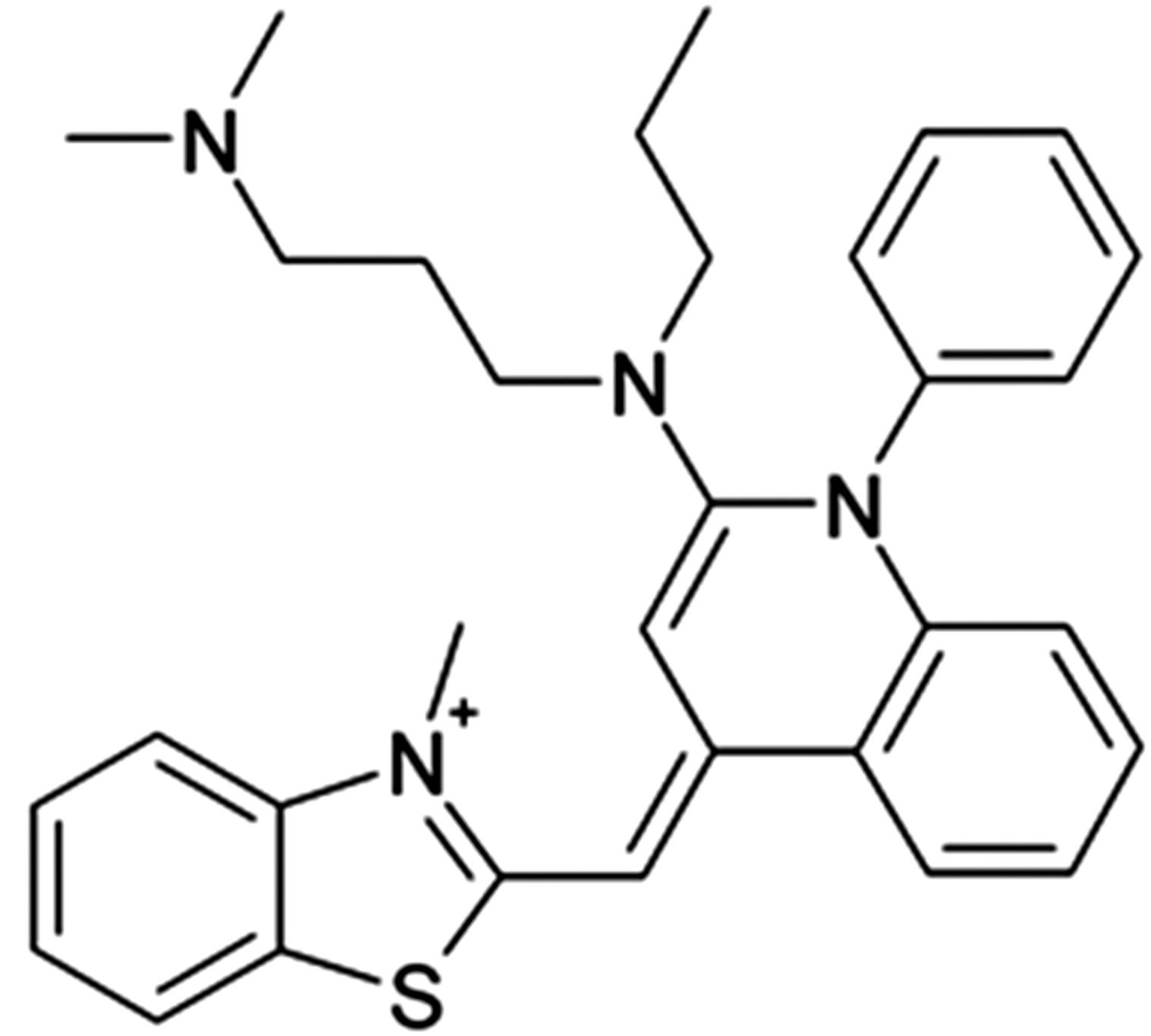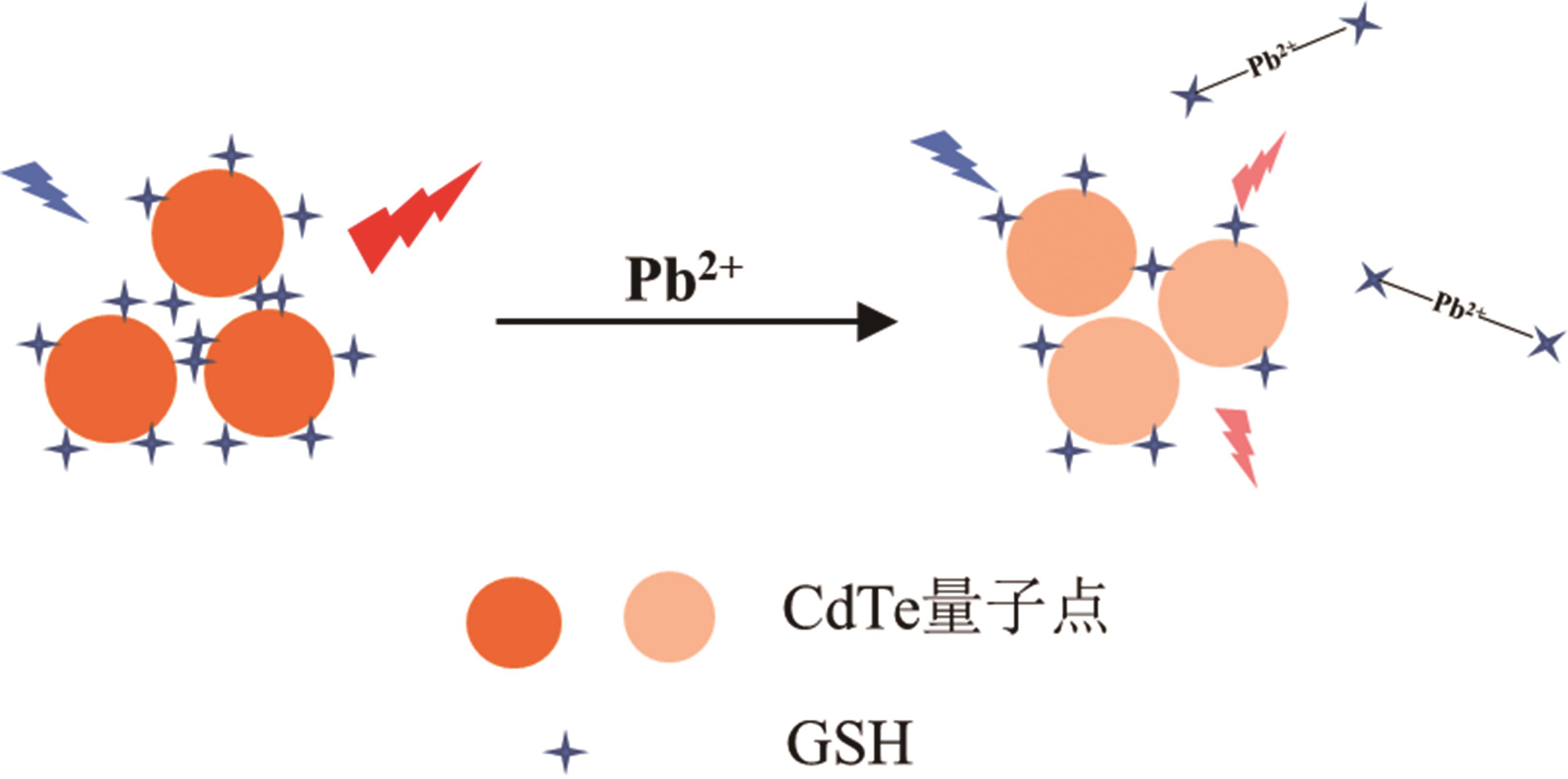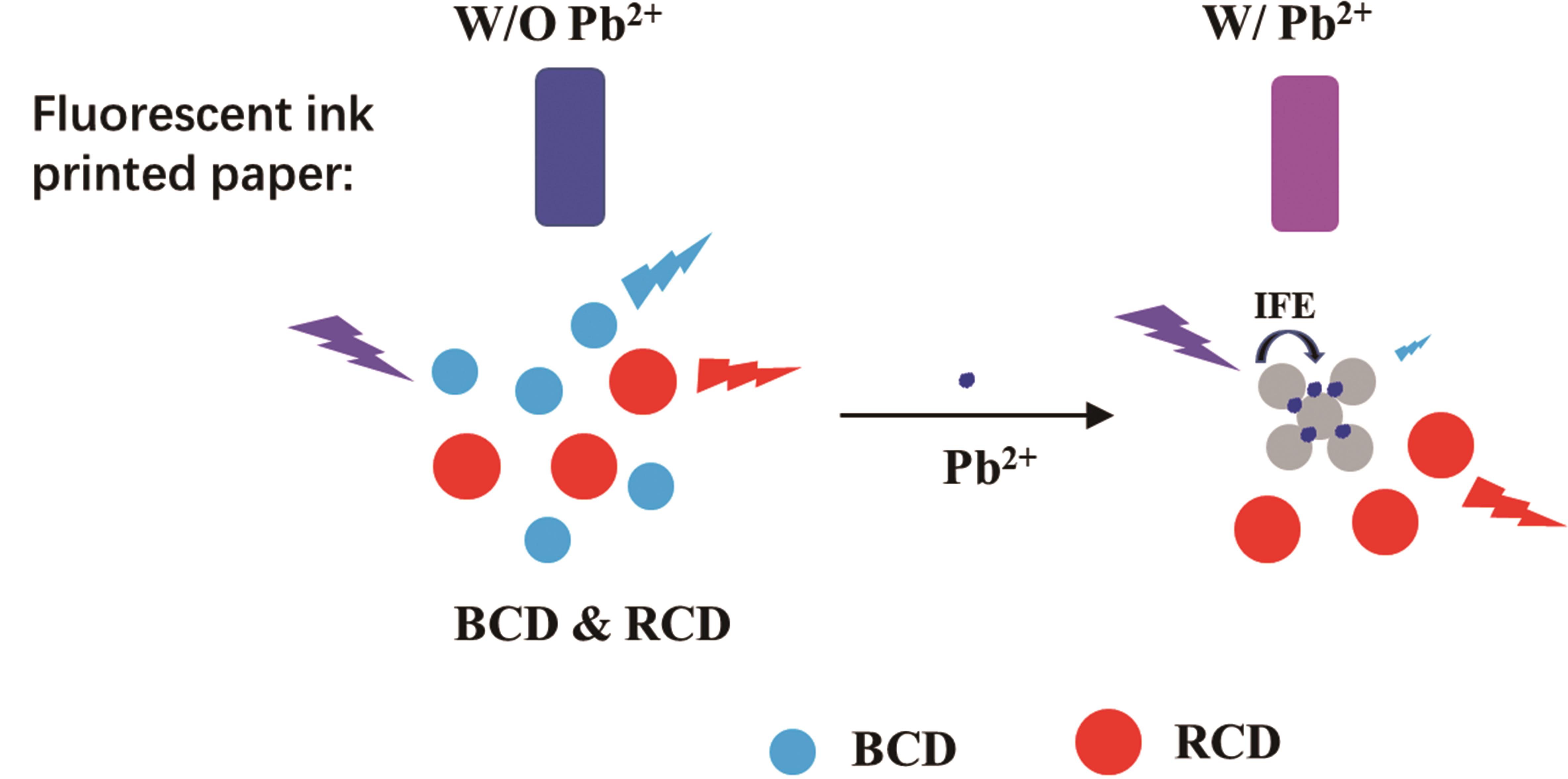
Chinese Journal of Applied Chemistry ›› 2022, Vol. 39 ›› Issue (7): 1039-1051.DOI: 10.19894/j.issn.1000-0518.210341
• Review • Previous Articles Next Articles
Research Progress on Fluorescence Detection of Heavy Metal Lead Ion
Chen-Yi XUE1, Lin-Jia LIU1, Ting WANG1, Lei GONG1, Long JIN1, Jian-Gang HAN1,2, Tai-Hua LI1,2( )
)
- 1.Co -Innovation Center for the Sustainable Forestry in Southern China,College of Biology and the Environment,Nanjing Forestry University,Nanjing 210037,China
2.National Positioning Observation Station of Hung-tse Lake Wetland Ecosystem in Jiangsu Province,Hongze 223100,China
-
Received:2021-07-13Accepted:2021-10-19Published:2022-07-01Online:2022-07-11 -
Contact:Tai-Hua LI -
About author:taehwali@njfu.edu.cn
-
Supported by:the National Key R&D Program of China(2017YFC0505803);the National Natural Science Foundation of China(41977354);the Natural Science Foundation of Jiangsu Province(BK20191387)
CLC Number:
Cite this article
Chen-Yi XUE, Lin-Jia LIU, Ting WANG, Lei GONG, Long JIN, Jian-Gang HAN, Tai-Hua LI. Research Progress on Fluorescence Detection of Heavy Metal Lead Ion[J]. Chinese Journal of Applied Chemistry, 2022, 39(7): 1039-1051.
share this article
Add to citation manager EndNote|Ris|BibTeX
URL: http://yyhx.ciac.jl.cn/EN/10.19894/j.issn.1000-0518.210341
类型 Type | 荧光探针 Fluorescent probe | 线性范围 Linear range | 检出限 LOD | 参考文献 Ref. |
|---|---|---|---|---|
香豆素类 Coumarins | 香豆素?三唑类 Coumarin?triazole | 0~20 μmol/L | 1.9 nmol/L | [ |
罗丹明类 Rhodamines | 罗丹明B衍生物 Rhodamine B derivatives | 1~10 μmol/L | - | [ |
罗丹明6G衍生物 Rhodamine 6G derivatives | 0.01~10 μmol/L | 2.7 nmol/L | [ | |
喹啉类 Quinolines | 8?氨基喹啉 8?Aminoquinoline | 1~100 μmol/L | 1 μmol/L | [ |
喹啉?吗啡缀合物 Quinoline?morphine conjugate | 0~70 μmol/L | 13 μmol/L | [ | |
其它 Others | SYBR GreenⅠ | 2~50 nmol/ L | 0.7 nmol/L | [ |
| FAM/DABCYL | 5~100 nmol/L | 3.1 nmol/L | [ | |
FAM DFHBI?SRNA Cy3/GO Cy5/MWCNT | 0.05~200 nmol/L 5~500 nmol/L 0.5 nmol/L~2 μmol/L 20~150 nmol/L | 0.01 nmol/L 6 nmol/L 0.5 nmol/L 20 nmol/L | [ [ [ [ |
Table 1 Fluorescent dyes for detection of lead ion
类型 Type | 荧光探针 Fluorescent probe | 线性范围 Linear range | 检出限 LOD | 参考文献 Ref. |
|---|---|---|---|---|
香豆素类 Coumarins | 香豆素?三唑类 Coumarin?triazole | 0~20 μmol/L | 1.9 nmol/L | [ |
罗丹明类 Rhodamines | 罗丹明B衍生物 Rhodamine B derivatives | 1~10 μmol/L | - | [ |
罗丹明6G衍生物 Rhodamine 6G derivatives | 0.01~10 μmol/L | 2.7 nmol/L | [ | |
喹啉类 Quinolines | 8?氨基喹啉 8?Aminoquinoline | 1~100 μmol/L | 1 μmol/L | [ |
喹啉?吗啡缀合物 Quinoline?morphine conjugate | 0~70 μmol/L | 13 μmol/L | [ | |
其它 Others | SYBR GreenⅠ | 2~50 nmol/ L | 0.7 nmol/L | [ |
| FAM/DABCYL | 5~100 nmol/L | 3.1 nmol/L | [ | |
FAM DFHBI?SRNA Cy3/GO Cy5/MWCNT | 0.05~200 nmol/L 5~500 nmol/L 0.5 nmol/L~2 μmol/L 20~150 nmol/L | 0.01 nmol/L 6 nmol/L 0.5 nmol/L 20 nmol/L | [ [ [ [ |
类型 Type | 荧光探针 Fluorescent probe | 线性范围 Linear range | 检出限 LOD | 参考文献 Ref. |
|---|---|---|---|---|
半导体量子点 Quantum Dots (QDs) | CdTe@GSH ZnS QDs CdS@Cys | 0.5~500 nmol/L 5~100 μmol/L 1~15 nmol/L | 0.1 nmol/L 2.45 μmol/L 3 nmol/L | [ [ [ |
碳点/碳量子点 Carbon Dots/Carbon Quantum Dots (CDs/CQDs) | BCDs/RCDs G?CDs SN?CDs CDAu rGQDs/GO?适体 DTC?AuNPs/GQDs | 0~200 nmol/L 0~50 μmol/L 2~50 μmol/L 0.0005~0.46 μmol/L 9.9~435 nmol/L 0.5~100 μmol/L | 2.89 nmol/L 0.025 μmol/L 0.2 μmol/L 0.25 nmol/L 0.6 nmol/L 0.35 μmol/L | [ [ [ [ [ [ |
荧光纳米簇 Fluorescent Nanoclusters | dsDNA?CuNCs CuNCs@GSH AT24?CuNCs 发夹型DNA?AgNCs PMAA?AgNCs AuNC@BSA | 5~100 nmol/L 200~700 μmol/L 0~150 pmol/L 0.1~100 μmol/L 0~1 μmol/L 0.00483~48.3 μmol/L | 5 nmol/L 106 μmol/L 5.2 pmol/L 10 nmol/L 60 nmol/L 4.83 nmol/L | [ [ [ [ [ [ |
金属有机骨架 Metal?organic Framework (MOF) | Zn?MOF MOF?5?NH2 Ti?MOF | 1~10 μmol/L 10~100 μmol/L 0~11 nmol/L | 32.6 nmol/L 0.25 μmol/L 7.7 pmol/L | [ [ [ |
上转换荧光纳米颗粒 Upconversion Nanoparticles (UCNP) | PEI?UCNP/MUA?AuNP UCNP?适体/AuNP?cDNA UCNP/MNP?AuNP UCNP/BHQ1?DNAzyme | 0.5~10 mmol/L 0.1~100 nmol/L 25~1400 nmol/L 0.1~10 nmol/L | 20 nmol/L 50 pmol/L 5.7 nmol/L 0.097 nmol/L | [ [ [ [ |
Table 2 Fluorescent nanomaterials for detection of lead ion
类型 Type | 荧光探针 Fluorescent probe | 线性范围 Linear range | 检出限 LOD | 参考文献 Ref. |
|---|---|---|---|---|
半导体量子点 Quantum Dots (QDs) | CdTe@GSH ZnS QDs CdS@Cys | 0.5~500 nmol/L 5~100 μmol/L 1~15 nmol/L | 0.1 nmol/L 2.45 μmol/L 3 nmol/L | [ [ [ |
碳点/碳量子点 Carbon Dots/Carbon Quantum Dots (CDs/CQDs) | BCDs/RCDs G?CDs SN?CDs CDAu rGQDs/GO?适体 DTC?AuNPs/GQDs | 0~200 nmol/L 0~50 μmol/L 2~50 μmol/L 0.0005~0.46 μmol/L 9.9~435 nmol/L 0.5~100 μmol/L | 2.89 nmol/L 0.025 μmol/L 0.2 μmol/L 0.25 nmol/L 0.6 nmol/L 0.35 μmol/L | [ [ [ [ [ [ |
荧光纳米簇 Fluorescent Nanoclusters | dsDNA?CuNCs CuNCs@GSH AT24?CuNCs 发夹型DNA?AgNCs PMAA?AgNCs AuNC@BSA | 5~100 nmol/L 200~700 μmol/L 0~150 pmol/L 0.1~100 μmol/L 0~1 μmol/L 0.00483~48.3 μmol/L | 5 nmol/L 106 μmol/L 5.2 pmol/L 10 nmol/L 60 nmol/L 4.83 nmol/L | [ [ [ [ [ [ |
金属有机骨架 Metal?organic Framework (MOF) | Zn?MOF MOF?5?NH2 Ti?MOF | 1~10 μmol/L 10~100 μmol/L 0~11 nmol/L | 32.6 nmol/L 0.25 μmol/L 7.7 pmol/L | [ [ [ |
上转换荧光纳米颗粒 Upconversion Nanoparticles (UCNP) | PEI?UCNP/MUA?AuNP UCNP?适体/AuNP?cDNA UCNP/MNP?AuNP UCNP/BHQ1?DNAzyme | 0.5~10 mmol/L 0.1~100 nmol/L 25~1400 nmol/L 0.1~10 nmol/L | 20 nmol/L 50 pmol/L 5.7 nmol/L 0.097 nmol/L | [ [ [ [ |
类型 Type | 荧光探针 Fluorescent probe | 线性范围 Linear range | 检出限 LOD | 参考文献 Ref. |
|---|---|---|---|---|
荧光蛋白 Fluorescence Protein | GFP | 3.4~97 nmol/L | 1.7 nmol/L | [ |
其它 Others | Met?leads 1.59 | 0.1~100 μmol/L | 0.5 μmol/L | [ |
| Met?lead 1.44 M1 | 0.01~10 μmol/L | 10 nmol/L | [ |
Table 3 Protein?based lead ion detection
类型 Type | 荧光探针 Fluorescent probe | 线性范围 Linear range | 检出限 LOD | 参考文献 Ref. |
|---|---|---|---|---|
荧光蛋白 Fluorescence Protein | GFP | 3.4~97 nmol/L | 1.7 nmol/L | [ |
其它 Others | Met?leads 1.59 | 0.1~100 μmol/L | 0.5 μmol/L | [ |
| Met?lead 1.44 M1 | 0.01~10 μmol/L | 10 nmol/L | [ |
| 1 | 乔增运, 李昌泽, 周正, 等. 铅毒性危害及其治疗药物应用的研究进展[J]. 毒理学杂志, 2020, 34(5): 416-420. |
| QIAO Z Y, LI C Z, ZHOU Z, et al. Research progress of lead toxicity and its therapeutic drug application[J]. Health Toxicol, 2020, 34(5): 416-420. | |
| 2 | 李红婷, 董然. 铅在4种宿根花卉中的亚细胞分布及迁移转化特点[J]. 南京林业大学学报(自然科学版), 2015, 39(4): 57-62. |
| LI H T, DONG R. Migration and transformation characteristics and subcellular distribution of lead in four perennial flowering plants[J]. Nanjing For Univ (Nat Sci Ed), 2015, 39(4): 57-62. | |
| 3 | GUO Y, LI X, FAN D, et al. Lysobacter may drive the hormetic effects of Pb on soil alkaline phosphatase[J]. Environ Sci Pollut Res, 2020, 27(15): 17779-17788. |
| 4 | FAN D, SUN J, LIU C, et al. Measurement and modeling of hormesis in soil bacteria and fungi under single and combined treatments of Cd and Pb[J]. Sci Total Environ, 2021, 783: 147494. |
| 5 | 左花. 铅的检测方法研究进展[J]. 湖南有色金属, 2020, 36(4): 77-80. |
| ZUO H. Research progress on lead detection method[J]. Hunan Nonferrous Met, 2020, 36(4): 77-80. | |
| 6 | 纪雪峰, 单斌, 王莎莎, 等. 荧光探针在水中重金属离子检测中的应用研究进展[J]. 青岛理工大学学报, 2021, 42(1): 109-118. |
| JI X F, SHAN B, WANG S S, et al. Application research progress of fluorescent probe in the detection of heavy metal ions in water[J]. Qingdao Technol Univ, 2021, 42(1): 109-118. | |
| 7 | 冷玲, 李壹, 熊晓辉. 重金属检测荧光传感技术的研究进展[J]. 食品工业科技, 2016, 37(15): 380-384, 389. |
| LENG L, LI L, XIONG X H. Study on fluorescent chemosensors for heavy metal ions[J]. Sci Technol Food Ind, 2016, 37(15): 380-384, 389. | |
| 8 | LI T, BYUN J Y, KIM B B, et al. Label-free homogeneous FRET immunoassay for the detection of mycotoxins that utilizes quenching of the intrinsic fluorescence of antibodies[J]. Biosens Bioelectron, 2013, 42: 403-408. |
| 9 | LI T, CHOI Y H, SHIN Y B, et al. A fluorescence enhancement-based label-free homogeneous immunoassay of benzo a pyrene (BaP) in aqueous solutions[J]. Chemosphere, 2016, 150: 407-413. |
| 10 | ARACHCHILAGE A P W, WANG F, FEYER V, et al. X-ray photoemission spectra and electronic structure of coumarin and its derivatives[J]. Phys Chem A, 2016, 120(36): 7080-7087. |
| 11 | NAZIR R, STASYUK A J, GRYKO D T. Vertically pi-expanded coumarins: the synthesis and optical properties[J]. J Org Chem, 2016, 81(22): 11104-11114. |
| 12 | TASIOR M, KIM D, SINGHA S, et al. Pi-expanded coumarins: synthesis, optical properties and applications[J]. J Mater Chem C, 2015, 3(7): 1421-1446. |
| 13 | WU G F, LI M X, ZHU J J, et al. A highly sensitive and selective turn-on fluorescent probe for Pb(Ⅱ) ions based on a coumarin-quinoline platform[J]. RSC Adv, 2016, 6(103): 100696-100699. |
| 14 | SHAILY, KUMAR A, PARVEEN I, et al. Highly selective and sensitive coumarin-triazole-based fluorometric “turn-off” sensor for detection of Pb2+ ions[J]. Luminescence, 2018, 33(4): 713-721. |
| 15 | ZHANG L Z, WANG J Y, FAN J L, et al. A highly selective, fluorescent chemosensor for bioimaging of Fe3+[J]. Bioorg Med Chem Lett, 2011, 21(18): 5413-5416. |
| 16 | LI L Q, MENG L P. Novel rhodamine derivate as high selective detection lead sensor[J]. Spectrochim Acta, Part A, 2014, 122: 772-775. |
| 17 | WAN J, ZHANG K, LI C, et al. A novel fluorescent chemosensor based on a rhodamine 6G derivative for the detection of Pb2+ ion[J]. Sens Actuators B: Chem, 2017, 246: 696-702. |
| 18 | BHATT K D, SHAH H D, PANCHAL M. A switch-off fluorescence probe towards Pb(Ⅱ) and Cu(Ⅱ) ions based on a calix 4 pyrrole bearing amino-quinoline group[J]. Luminesc, 2017, 32(8): 1398-1404. |
| 19 | VELMURUGAN K, VICKRAM R, JIPSA C V, et al. Quinoline based reversible fluorescent probe for Pb2+; applications in milk, bioimaging and INHIBIT molecular logic gate[J]. Food Chem, 2021, 348: 129098. |
| 20 | 刘萍, 刘竹苗, 李红艳, 等. 基于核酸外切酶Ⅲ和G-四链体无标记检测Pb2+的荧光传感器[J]. 分析试验室, 2020, 39(8): 885-889. |
| LIU P, LIU Z M, LI H Y, et al. A label fluorescence sensor for the detection of Pb2+ based on exonuclease Ⅲ and G-quadruplex[J]. Chinese J Anal Lab, 2020, 39(8): 885-889. | |
| 21 | LI H, ZHANG Q, CAI Y, et al. Single-stranded DNAzyme-based Pb2+ fluorescent sensor that can work well over a wide temperature range[J]. Biosens Bioelectron, 2012, 34(1): 159-164. |
| 22 | 刘涛, 李丹, 梁杰, 等. 基于核酸外切酶Ⅲ及DNAzyme的铅离子荧光传感器的研究[J]. 分析化学, 2020, 48(2): 248-254. |
| LIU T, LI D, LIANG J, et al. A fluorescence biosensor for lead ion detection based on DNAzyme and exonuclease Ⅲ[J]. Chinese J Anal Chem, 2020, 48(2): 248-254. | |
| 23 | DASGUPTA S, SHELKE S A, LI N S, et al. Spinach RNA aptamer detects lead(Ⅱ) with high selectivity[J]. Chem Commun, 2015, 51(43): 9034-9037. |
| 24 | WEN Y Q, PENG C, LI D, et al. Metal ion-modulated graphene-DNAzyme interactions: design of a nanoprobe for fluorescent detection of lead(II) ions with high sensitivity, selectivity and tunable dynamic range[J]. Chem Commun, 2011, 47(22): 6278-6280. |
| 25 | WANG S E, SI S H. Aptamer biosensing platform based on carbon nanotube long-range energy transfer for sensitive, selective and multicolor fluorescent heavy metal ion analysis[J]. Anal Methods, 2013, 5(12): 2947-2953. |
| 26 | SINGH H, BAMRAH A, BHARDWAJ S K, et al. Nanomaterial-based fluorescent sensors for the detection of lead ions[J]. J Hazard Mater, 2021, 407: 124379. |
| 27 | ZHANG J, CHENG F, LI J, et al. Fluorescent nanoprobes for sensing and imaging of metal ions: recent advances and future perspectives[J]. Nano Today, 2016, 11(3): 309-329. |
| 28 | DE ACHA N, ElOSUA C, CORRES J M, et al. Fluorescent sensors for the detection of heavy metal ions in aqueous media[J]. Sensors, 2019, 19(3) : 599. |
| 29 | 毕明刚, 张纪梅. 半导体量子点的研究进展[J]. 化工新型材料, 2020, 48(11): 24-29, 34. |
| BI M G, ZHANG J M. Progress on semiconductor quantum dot[J]. New Chem Mater, 2020, 48(11): 24-29, 34. | |
| 30 | 师赛鸽, 王松玮, 张云翔. 谷胱甘肽碲化镉量子点的合成及痕量铅离子检测[J]. 信阳师范学院学报(自然科学版), 2020, 33(1): 124-128. |
| SHI S G, WANG S W, ZHANG Y X. Synthesis of CdTe@GSH quantum dots and its application in detection of trace lead ion[J]. J Xinyang Norm Univ (Nat Sci Ed), 2020, 33(1): 124-128. | |
| 31 | JACOB J M, RAJAN R, KURUP G G. Biologically synthesized ZnS quantum dots as fluorescent probes for lead(Ⅱ) sensing[J]. Luminescence, 2020, 35(8): 1328-1337. |
| 32 | SATNAMI M L, VAISHANAV S K, NAGWANSHI R, et al. Spectrofluorometric determination of mercury and lead by colloidal CdS nanomaterial[J]. J Dispersion Sci Technol, 2016, 37(2): 196-204. |
| 33 | 霍爱玲, 陈金慧, 甄艳, 等. 无机纳米颗粒在植物转化中的应用[J]. 南京林业大学学报(自然科学版), 2016, 40(6): 162-166. |
| HUO A L, CHEN J H, ZHEN Y, et al. Inorganic nanoparticles as delivery vectors for plant transformation[J]. J Nanjing For Univ (Nat Sci Ed), 2016, 40(6): 162-166. | |
| 34 | 孟维雪, 杨柏, 卢思宇. 从碳点到碳化聚合物点:发展和挑战[J]. 发光学报, 2021, 42(8): 1075-1094, 1072. |
| MENG W X, YANG B, LU S Y. From carbons dots to carbonized polymer dots: development and challenges[J]. Chinese J Lumin, 2021, 42(8): 1075-1094, 1072. | |
| 35 | WANG H, YANG L, CHU S, et al. Semiquantitative visual detection of lead ions with a smartphone via a colorimetric paper-based analytical device[J]. Anal Chem, 2019, 91(14): 9292-9299. |
| 36 | 康玉, 任国栋, 侯笑雨, 等. 发绿色荧光碳点的制备并用于Pb2+的灵敏检测和细胞成像[J]. 化学研究与应用, 2020, 32(1): 32-39. |
| KANG Y, REN G D, HOU X Y, et al. Preparation of carbon dots with green fluorescence for highly sensitive detection for lead ions and cell imaging[J]. Chem Res Appl, 2020, 32(1): 32-39. | |
| 37 | 丁志杰, 魏居孟, 郭雨, 等. 硫氮共掺杂碳量子点荧光识别Pb 2+[J]. 分析试验室, 2018, 37(9): 1045-1048. |
| DING Z J, WEI J M, GUO Y, et al. Fluorescent recognition of lead(Ⅱ) ions with the sulfur- and nitrogen-co-doped carbon quantum dots[J]. Chinese J Anal Lab, 2018, 37(9): 1045-1048. | |
| 38 | LI D, YUAN X, LI C, et al. A novel fluorescence aptamer biosensor for trace Pb(Ⅱ) based on gold-doped carbon dots and DNAzyme synergetic catalytic amplification[J]. Lumin, 2020, 221: 117056. |
| 39 | QIAN Z S, SHAN X Y, CHAI L J, et al. A fluorescent nanosensor based on graphene quantum dots-aptamer probe and graphene oxide platform for detection of lead(Ⅱ) ion[J]. Biosens Bioelectron, 2015, 68: 225-231. |
| 40 | 薛晓洁, 雷茹淋, 张帆, 等. 基于功能化纳米金和石墨烯量子点的比色/荧光双信号检测Pb2+研究[J]. 湖北大学学报(自然科学版), 2020, 42(6): 669-674, 692. |
| XUE X J, LEI R L, ZHANG F, et al. A sensitive dual-signaling probes for lead ions detection based on inner filter effect of functionalizing gold nanoparticles on the fluorescence of graphene quantum dots[J]. J Hubei Univ (Nat Sci Ed), 2020, 42(6): 669-674, 692. | |
| 41 | MOLAEI M J. Principles, mechanisms, and application of carbon quantum dots in sensors: a review[J]. Anal Methods, 2020, 12(10): 1266-1287. |
| 42 | CHEN J, LIU J, FANG Z, et al. Random dsDNA-templated formation of copper nanoparticles as novel fluorescence probes for label-free lead ions detection[J]. Chem Commun, 2012, 48(7): 1057-1059. |
| 43 | 韩冰雁, 侯绪芬, 相荣超, 等. 基于铜纳米簇的聚集诱导发光检测铅离子[J]. 分析化学, 2017, 45(1): 23-27. |
| HAN B Y, HOU X F, XIANG R C, et al. Detection of lead ion based on aggregation-induced emission of copper nanoclusters[J]. Chinese J Anal Chem, 2017, 45(1): 23-27. | |
| 44 | 欧丽娟, 黄稷科, 吕小龙, 等. 双链铜纳米簇用于铅离子的超灵敏非标记检测[J]. 分析试验室, 2016, 35(8): 899-902. |
| OU L J, HUANG J K, LV X L, et al. DsDNA-templated fluorescent copper nanoclusters for ultrasensitive label-free detection of Pb2+ ion[J]. Chinese J Anal Lab, 2016, 35(8): 899-902. | |
| 45 | 蔺超, 宫贺, 范楼珍, 等. DNA/银纳米簇荧光探针在检测Pb2+中的应用[J]. 化学学报, 2014, 72(6): 704-708. |
| LIN C, GONG H, FAN L Z, et al. Application of DNA/Ag nanocluster fluorescent probe for the detection of Pb2+[J]. Acta Chim Sin, 2014, 72(6): 704-708. | |
| 46 | BURRATTI L, CIOTTA E, BOLLI E, et al. Fluorescence enhancement induced by the interaction of silver nanoclusters with lead ions in water[J]. Colloids Surf A, 2019, 579: 123634. |
| 47 | NATH P, CHATTERJEE M, CHANDA N. Dithiothreitol-facilitated synthesis of bovine serum albumin-gold nanoclusters for Pb(II) ion detection on paper substrates and in live cells[J]. ACS Appl Nano Mater, 2018, 1(9): 5108-5118. |
| 48 | LI Z, SUN Q, ZHU Y, et al. Ultra-small fluorescent inorganic nanoparticles for bioimaging[J]. J Mater Chem B, 2014, 2(19): 2793-2818. |
| 49 | 杨岳, 关成立, 曾取, 等. 金属有机骨架材料MOFs的结构及合成研究[J]. 化工技术与开发, 2021, 50(4): 18-20, 45. |
| YANG Y, GUANG C L, ZENG Q, et al. Study on structure and synthsis of metal-organic framework[J]. Technol Dev Chem Ind, 2021, 50(4): 18-20, 45. | |
| 50 | 初红涛, 姚冬, 陈嘉琪, 等. 金属有机骨架材料作为荧光探针的研究进展[J]. 材料导报, 2020, 34(13): 13114-13120. |
| CHU H T, YAO D, CHEN J Q, et al. Research progress of metal-organic framework materials as fluorescent probes[J]. Mater Rev, 2020, 34(13): 13114-13120. | |
| 51 | HE J, CHEN G. A fluorescent Zn(Ⅱ)-organic framework for selective detection of Pb2+ and a protective effect in osteoarthritis treatment by reducing ROS accumulation and apoptosis in chondrocytes[J]. J Coord Chem, 2020, 73(3): 393-403. |
| 52 | AN X, TAN Q, PAN S, et al. A turn-on luminescence probe based on amino-functionalized metal-organic frameworks for the selective detections of Cu2+, Pb2+ and pyrophosphate[J]. Spectrochim Acta A, 2021, 247: 119073. |
| 53 | VENKATESWARLU S, REDDY A S, PANDA A, et al. Reversible fluorescence switching of metal-organic framework nanoparticles for use as security ink and detection of Pb2+ ions in aqueous media[J]. ACS Appl Nano Mater, 2020, 3(4): 3684-3692. |
| 54 | SAMANTA P, LET S, MANDAL W, et al. Luminescent metal-organic frameworks (LMOFs) as potential probes for the recognition of cationic water pollutants[J]. Inorg Chem Front, 2020, 7(9): 1801-1821. |
| 55 | LI H, WANG X, HUANG D, et al. Recent advances of lanthanide-doped upconversion nanoparticles for biological applications[J]. Nanotechnology, 2020, 31(7): 072001. |
| 56 | ZHANG Y, WU L, TANG Y, et al. An upconversion fluorescence based turn-on probe for detecting lead(Ⅱ) ions[J]. Anal Methods, 2014, 6: 9073-9077. |
| 57 | WU S, DUAN N, SHI Z, et al. Dual fluorescence resonance energy transfer assay between tunable upconversion nanoparticles and controlled gold nanoparticles for the simultaneous detection of Pb2+ and Hg2+[J]. Talanta, 2014, 128: 327-336. |
| 58 | CHEN M, HASSAN M, LI H, et al. Fluorometric determination of lead(Ⅱ) by using aptamer-functionalized upconversion nanoparticles and magnetite-modified gold nanoparticles[J]. Microchim Acta, 2020, 187(1): 85. |
| 59 | HUANG L, CHEN F, ZONG X, et al. Near-infrared light excited UCNP-DNAzyme nanosensor for selective detection of Pb2+ and in vivo imaging[J]. Talanta, 2021, 227: 122156. |
| 60 | KUO S Y, LI H H, WU P J, et al. Dual Colorimetric and fluorescent sensor based on semiconducting polymer dots for ratiometric detection of lead ions in living cells[J]. Anal Chem, 2015, 87(9): 4765-4771. |
| 61 | FUTRA D, HENG L Y, AHMAD A, et al. An optical biosensor from green fluorescent escherichia coli for the evaluation of single and combined heavy metal toxicities[J]. Sensors, 2015, 15(6): 12668-12681. |
| 62 | CHIU T Y, YANG D M. Intracellular Pb2+ content monitoring using a protein-based Pb2+ indicator[J]. Toxicol Sci, 2012, 126(2): 436-445. |
| 63 | YANG D M, FU T F, LIN C S, et al. High-performance FRET biosensors for single-cell and in vivo lead detection[J]. Biosens Bioelectron, 2020, 168: 112571. |
| 64 | 李慧圆, 雷春阳, 黄燕, 等. 荧光蛋白结构改造及其生物传感应用[J]. 高等学校化学学报, 2020, 41(11): 2324-2334. |
| LI H Y, LEI C Y, HUANG Y, et al. Structural modification of fluorescent proteins and their applications in biosensing[J]. Chem J Chinese Univ, 2020, 41(11): 2324-2334. | |
| 65 | GAUTIER A, TEBO A G. Fluorogenic protein-based strategies for detection, actuation, and sensing[J]. Bioessays, 2018, 40(10): 1800118. |
| [1] | Cong-Jun CAO, Han-Xiao MA, Cheng-Min HOU, Xiao-Jian DING, Biao GUAN. Adsorption of Cu(Ⅱ) from Solution by Modified Magnetic Ethyl Cellulose [J]. Chinese Journal of Applied Chemistry, 2022, 39(6): 969-979. |
| [2] | Qin YANG, Ning-Hua CHEN, Yu-Jie ZHANG, Zhi-Xiang YE, Ying-Chun YANG. Preparation of Cerium Zirconium Composite Oxide Modified Glassy Carbon Electrode and the Detection of Pb2+ in Water Samples [J]. Chinese Journal of Applied Chemistry, 2022, 39(6): 990-999. |
| [3] | SHEN Shuchang, PENG Cheng, WANG Di. Preparation Solid Phase Extraction Packing Material Based on Ligand Bonded Montmorillonite and Its Performance on Heavy Metal Ion Adsorption [J]. Chinese Journal of Applied Chemistry, 2019, 36(6): 717-725. |
| [4] | XIE Dandan, YAN Liang, YIN Yuli, ZHANG Zhaohui, WANG Jing. Preparation and Application of Magnetic Multi-ion Imprinted Polymers Based on Multiwalled Carbon Nanotubes [J]. Chinese Journal of Applied Chemistry, 2017, 34(4): 456-463. |
| [5] | WANG Dongsheng,LI Wentao,YANG Xiaofang,AN Guangyu. Ferrates:Green Oxidants and Coagulants in Water Treatment [J]. Chinese Journal of Applied Chemistry, 2016, 33(11): 1221-1233. |
| [6] | YAO Qingxin, XIE Jianjun, LIU Junxia, TANG Liping, LIU Yuan. Effect of Ionic Strength on the Adsorption of Pb2+ and Cu2+ onto Bentonite/Sodium Lignosulfonate Graft-Polymerized with Acrylamide and Maleic Anhydride [J]. Chinese Journal of Applied Chemistry, 2015, 32(8): 940-947. |
| [7] | WANG Bo, ZHANG Fan*, HUANG Fu. Preparation of Reduced Graphene Oxide And Its Adsorption Property for Heavy Metal Ions [J]. Chinese Journal of Applied Chemistry, 2014, 31(04): 502-504. |
| [8] | XU Siyuan, LEI Ping, JIN Guanping*. Determination of Pb(Ⅱ), Cd(Ⅱ) with Melamine Chelating Resin/Multi-walled Carbon Nanotubes Composites Modified Waxed Graphite Electrode [J]. Chinese Journal of Applied Chemistry, 2014, 31(02): 206-211. |
| [9] | Zhou Yanxiu, Zhu Guoyi. CHARACTERISTICS OF SULFHYDRYL-CONTAINING ADSORBENT BASED ON ACTIVE CARBON [J]. Chinese Journal of Applied Chemistry, 1993, 0(2): 42-46. |
| Viewed | ||||||
|
Full text |
|
|||||
|
Abstract |
|
|||||









